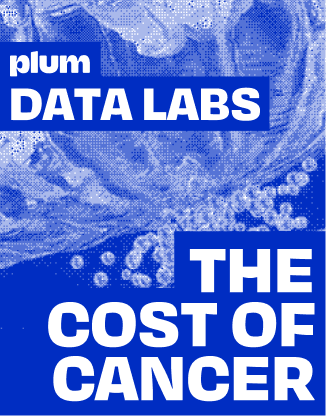If we try listing all the important must-have skills for corporate personnel, the list would certainly be incomplete without spreadsheets or MS Excel. Be it maintaining lists, adding and subtracting, or even running complex models, spreadsheets are one of the most important inventions in this domain. It is quite crucial to understand and evaluate which of the following is a benefit of using spreadsheets and how the company can maximize this benefit.
Which of the following is a benefit of using spreadsheets?
Let’s try to understand why spreadsheets are so useful ?.
They help in data organisation: Data organisation is a very important aspect of any activity. From keeping a record of expenses to holidays, spreadsheets provide advantages by being an efficient way to manage large amounts of data without getting lost in it. Columns and rows can be added in spreadsheets, making them ideal for adding data in horizontally and vertically form easily. The fact that tabs can be kept through spreadsheets is one of their greatest advantages in such a simplified manner.
Makes calculations easy and simplistic: Spreadsheets have a number of formulas already present in them. The data that is entered can easily be scrutinised with the help of the various built-in formulas. These formulas save the user’s time by avoiding repetitive calculations. There are also features such as dragging from the cell to calculate further, which are highly useful.
Ease of collaboration: The benefit of spreadsheets provides options to multiple users to edit the file at the same time. This leads to collaboration and saves a lot of time. In Microsoft Excel, multiple users can share a file, even though only one user can edit the file at a time, whereas in Google Sheets, multiple users can edit the file at any given time, though any cell that one user is currently using is locked.
Provide great tools for graphical presentation: While one of the benefits of using spreadsheets is a very good way to work with numbers, the numbers that have been calculated may look intimidating ?and not very visually appealing. Therefore, to fill the gap between numbers and presentation, users can take the help of graphical representation of data. In this regard, spreadsheets offer a wide range of graphs and charts for representing the data present. Data and sales can be converted into pie charts, line charts, graphs, etc.
No Code Tools ⚒️
Do you know that Microsoft Excel is a no-code tool? If you don’t know what a no-code tool is, we’re here to discuss that. These are basically software built without programming or using codes. Such platforms are used to provide a visual way for building front-end interfaces. Microsoft Excel was released in 1985 and was one of the first software programs in which people could crunch data, write memos, and create graphics without using programming.
So, we can say that it definitely simplified the way people interacted with data organisations through computers. It made it possible for even a layperson to be able to use a computer to build models, use formulas, and do complex calculations. Today, we can see a number of extremely successful companies running such models, courtesy of the benefit of using spreadsheets.
The late 90s turned out to be the age where no code apps and websites really started to boom. With a growing trend of the internet, a fresh wave of people started to venture into the online world, looking to start their own websites and emails. This led to the founding of a number of companies that wanted to be a part of the internet revolution without generally having a very vast knowledge of the complexities. Websites such as GeoCities built drag-and-drop websites, and LiveJournal and Blogger helped people build their own websites without any coding. In the year 2001, Mailchimp? was launched that helped people send emails automatically using customizable templates to a list of people; it is active even today and is one of the most successful sites in this domain.
A few notable examples from the past few years are:
Airtable: Air table is a spreadsheet platform through which information can be organized and connected in a very modern fashion. In this app images status and even social media accounts can be connected, giving an overall view of the product and its details. We can say that this app has taken a normal spreadsheet and added to it the modern-day context of images and social media, making it a much better integrated and useful product.
Webflow: Webflow is an online website builder as well as CMS. It provides a number of templates as well as customizations and management options for creating websites on your own. It also provides SEO tools for optimising and driving traffic to websites. It is a competitor of WordPress.
Notion.so: This is an online platform used by professional teams to increase their productivity. Using this app, tasks and timings are decided so that all the employees can work in sync. It has proven beneficial in the past years even in companies such as Google and Apple where engineers have used it to improve their group productivity. The app helps the team in cross collaborations within the team, keeping up to date on project status, and keeping an eye on everyone while learning from each other’s working styles.
Softr: Softr is more than a no-code platform; it's the simplest way to transform your spreadsheets or databases into fully functional business apps. Unlike spreadsheets, off-the-shelf SaaS, or custom-built systems, Softr gives you the tools to customize layout, design, and logic, so you can create apps that fit your workflow. Custom permissions lets you control what users can see and do, with precision. On top of that, Softr stands out as a budget-friendly alternative to Airtable for efficiently managing and sharing data among internal teams, clients, and vendors.
As important as it is for a company to capitalise on its productivity to stay on top of the competition, it is equally important to place emphasis on employee well-being. Plum Insurance provides group health cover which keeps your team informed about their benefits and helps to keep the work environment healthy!
FAQ
Q. How can businesses effectively transition from traditional spreadsheets to more advanced no-code tools like Airtable or Webflow without disrupting existing processes?
A. Businesses should start with a pilot program, selecting a small team to test no-code tools. This allows for gradual integration. Training sessions can help employees adapt to new software. Therefore, combining legacy data with new platforms becomes seamless, minimizing disruption.
Q. What specific training or resources are available for employees to learn these no-code platforms and effectively integrate them into their workflow?
A. Many no-code platforms offer online tutorials, webinars, and community forums. Companies can also arrange workshops with experts. Therefore, employees gain hands-on experience and quickly adapt to new tools, enhancing productivity.
Q. Can spreadsheets and no-code tools like Airtable, Webflow, and Notion.so be integrated with each other, and if so, how?
A. Yes, spreadsheets can be integrated with no-code tools using APIs or built-in integration features. This allows for automatic data syncing. Therefore, leveraging both spreadsheets and no-code tools enhances data management and operational efficiency.
Do more, go for some Fun Friday Games in the office.
Say hello on Twitter.
.avif)










.avif)














